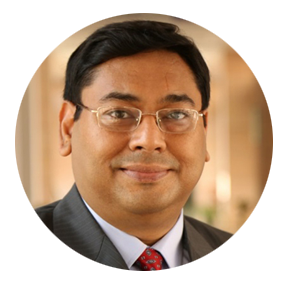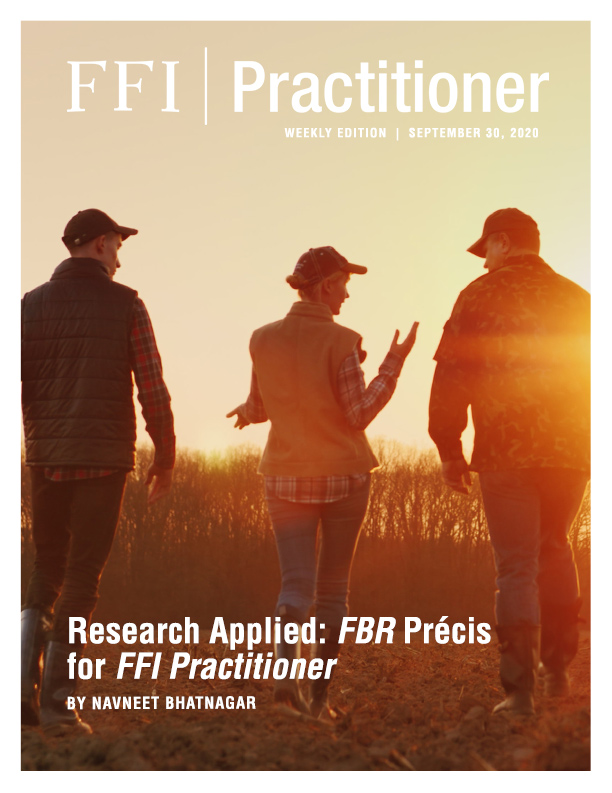
Socioemotional wealth (SEW) theory suggests that family business owners preserve their affective endowment or SEW even if doing so costs them financially. Extending the concept of SEW beyond the owner family, Nancy Kurland and Sara Jane McCaffrey argue that SEW endowment is also rooted in the local community in which a family business is embedded. They suggest that belonging to the local community and its well-being influence family business decisions. Based on the in-depth study of 20 family-owned farms in Lancaster County, Pennsylvania, USA, the authors test whether SEW endowment preservation also operates at the community level. They probe whether family businesses prefer to avoid losses to the ‘community SEW’ even when this may require them to forgo monetary gains and/or lose family SEW.
SEW, Succession, and Community
Many family businesses view intergenerational succession as a means to ensure continuity of family control over the business and preservation of family SEW. In the farming business, capital is mainly invested in land, which is the key resource to generate income. Most farmlands are in sparsely populated rural areas, where farming is the major productive usage of land. Therefore, motivated by SEW preservation, family farm owners continue farming activities. However, in contrast, Lancaster County is 65 miles south of Philadelphia. Land prices are high and development of the land represents a more lucrative alternative to farming. Yet, the community continues to be engaged in farming, making Lancaster County the most productive, non-irrigated land parcel in the United States.
Explaining this seemingly odd behavior, the authors suggest that SEW endowment partially originates from the community in which the business operates. Family farm owners derive a sense of togetherness from their community membership. Therefore, it is the ‘community SEW’ endowment that the family farm owners aim to preserve. Their goal is to protect the ‘way of life’ or the well-being of the whole farming community. Family farm owners view their own welfare in the fulfillment of this larger objective. Therefore, they do not sell their agricultural land for other uses, even when offered an attractive price. However, they may participate in a farm preservation program and even part with their land to ensure its continued use for farming. Thus, they are even willing to bear monetary and family SEW costs in the collective interest of the community.
Reasons for Farm Preservation
The authors argue that a mix of economic and SEW goals motivate family owners to preserve their farms.
- Economic Goals: Farms generate income and help protect the family’s economic independence, as they could pay off debt, buy more land, or save for retirement, and could avoid tax consequences for the next generation. The greater economic reason was to preserve the community’s economic potential.
- SEW Goals: At the family level, preserving the family tradition and its farming identity protects the family SEW. Ensuring legal independence also contributes to the family’s freedom and satisfaction. At the broader, community level, preserving farmland protects the community, its farming identity, and fertile land.
Sidebar
Key Findings:
The in-depth analysis conducted by the authors found the following:
- It was confirmed that these family farms were willing to partially forego financial income and dedicated their land for continued use in farming to preserve community SEW. The larger interest of the community and preservation of its ‘way of life’ superseded their own financial gain and family SEW.
- Farm preservation kept the family identity intact and aligned with farming activity. Hence, there was partial alignment between family and community SEW. If the land were to be sold to developers, the family farm owners would view the family identity as diminished. Selling the land to the developers would have provided huge financial returns to the family or successor, but instead these farm owners chose to forego this income by opting for land preservation. In such a situation, community SEW was found to supersede intergenerational family ties.
Readers interested to know more about the phenomenon of community-level SEW preservation by family businesses should refer to the ‘Discussion’ section of this paper.
Implications of the Study
For Research
- This paper is significant because it extends the SEW phenomenon from a family level of analysis to the level of community. This is a paradigm shift in the way SEW is conceptualized in family business literature. Their data demonstrates that preservation of ‘community SEW’ may supersede that of the ‘family SEW.’ These findings open a new avenue for research within the SEW literature.
- The study also calls for a reexamination of the concepts of stewardship and responsible ownership. It establishes that owners may act as community stewards and prioritize community SEW preservation while making strategic decisions. However, this may result in financial and/or family SEW costs. Future research should probe how responsible owners may strike a balance between community and family SEW preservation.
For Family Firms
- Family firms deeply embedded in local communities partially derive their SEW endowment from community membership. Therefore, community SEW will influence their strategic choices and determination of economic goals. However, this could also require that they sacrifice income and/or family SEW. Family owners need be congnisant of these competing needs and prioritize their decisions after weighing all the pros and cons.
- Family firm ownership succession and the decision to continue the business or to exit from it may also be shaped by community SEW considerations, such as community well-being and preservation of their ‘way of life.’ In certain situations (like in the Lancaster County example), community SEW preservation becomes an existential concern that supersedes the need for financial gains or preserving family SEW.
For Advisors
- Family business advisors must be sensitive to the local community context in which their family business client operates. When advisors are aware of the extent their clients are embedded in their community, they can better understand the influence of community SEW on the firm’s strategic objectives and decisions. This would help them devise more effective solutions for the clients.
- It is important for family business practitioners to assess whether their client is willing to sacrifice family SEW for the preservation of community SEW. If the client is, it would be prudent to advise the family owners to strike a balance between community SEW and family SEW.
- Practitioners may advise their clients who operate within close-knit traditional communities to leverage the ‘community SEW’ for collective bargaining to demand public policy measures that may support their growth and survival. For instance, a community of organic farmers or small-scale garment making units may collectively request local administration for supportive policies. In such situations, advisors can help generate awareness and explain to their family business clients how the efforts made for community well-being will eventually benefit them.

Up Next Week

